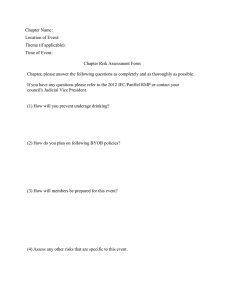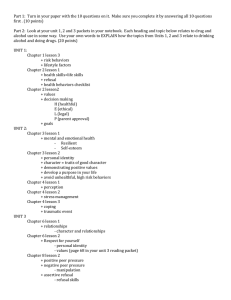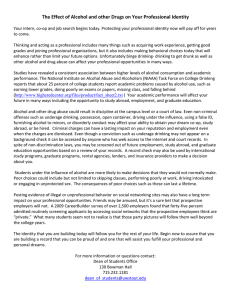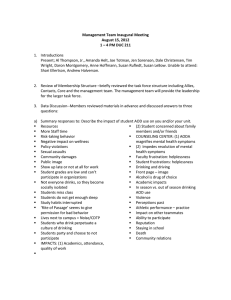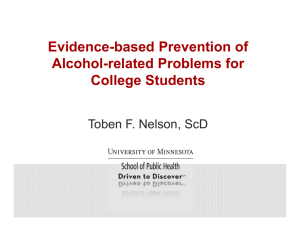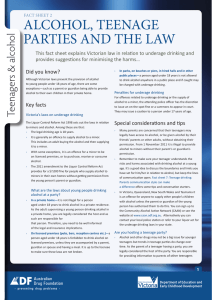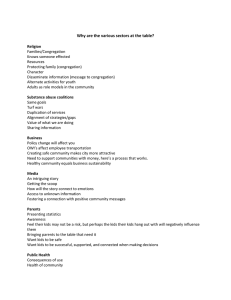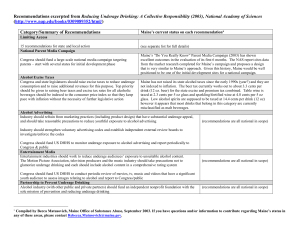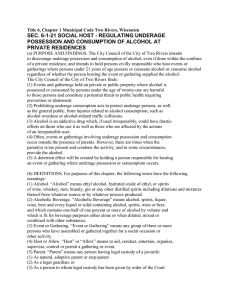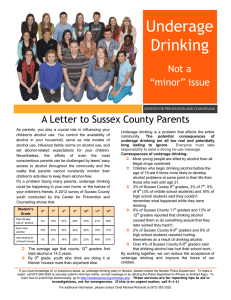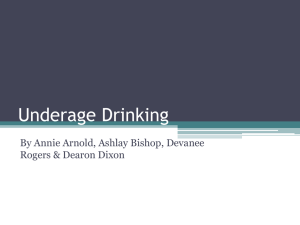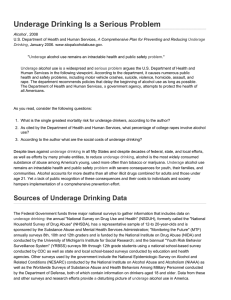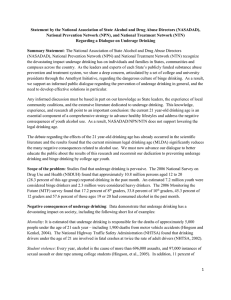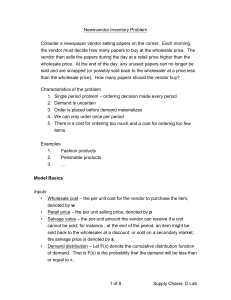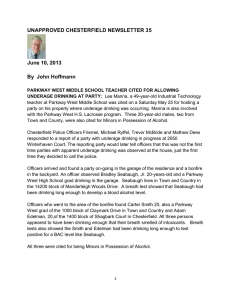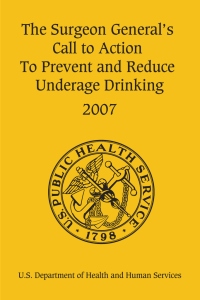High –lights and light bulbs
advertisement
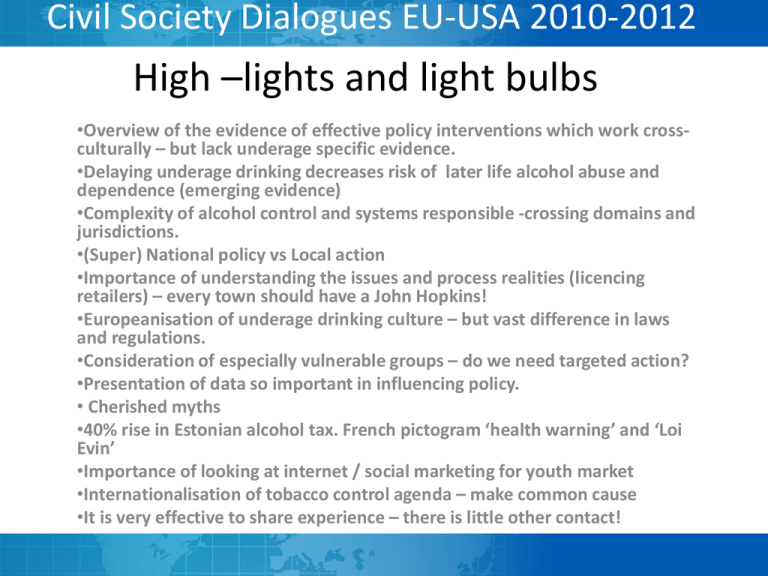
Civil Society Dialogues EU-USA 2010-2012 High –lights and light bulbs •Overview of the evidence of effective policy interventions which work crossculturally – but lack underage specific evidence. •Delaying underage drinking decreases risk of later life alcohol abuse and dependence (emerging evidence) •Complexity of alcohol control and systems responsible -crossing domains and jurisdictions. •(Super) National policy vs Local action •Importance of understanding the issues and process realities (licencing retailers) – every town should have a John Hopkins! •Europeanisation of underage drinking culture – but vast difference in laws and regulations. •Consideration of especially vulnerable groups – do we need targeted action? •Presentation of data so important in influencing policy. • Cherished myths •40% rise in Estonian alcohol tax. French pictogram ‘health warning’ and ‘Loi Evin’ •Importance of looking at internet / social marketing for youth market •Internationalisation of tobacco control agenda – make common cause •It is very effective to share experience – there is little other contact! Civil Society Dialogues EU-USA 2010-2012 ‘Parked’ and ‘Hot Button’ Issues •Can the alcohol industry be part of the solution (to reducing underage drinking)? •Can we develop a set of recommendations on internet advertising of alcohol? •Enforcement (minimum age, drink drive, licensing etc) a neglected aspect? •Universal versus targeted approaches? •Is underage drinking really an entry point into tackling harmful drinking per se? •Should we consider targeted approaches to vulnerable groups? •How might we improve the discourse around ‘passive drinking’? •Is it useful to consider alcohol, drugs and tobacco and youth – can we make common cause? •What policies/interventions work to decrease access to alcohol from social providers (peers, older siblings, parents)? •Is there a greater role for the healthcare professional as advocates? •How do we raise the visibility of alcohol control in the development agenda? •How do we finance prevention activities? •Can more be done to improve/harmonise indicators so comparison becomes more feasible? •What are the ‘risk factors’ – causes of the causes, what are the ‘protective factors’?
